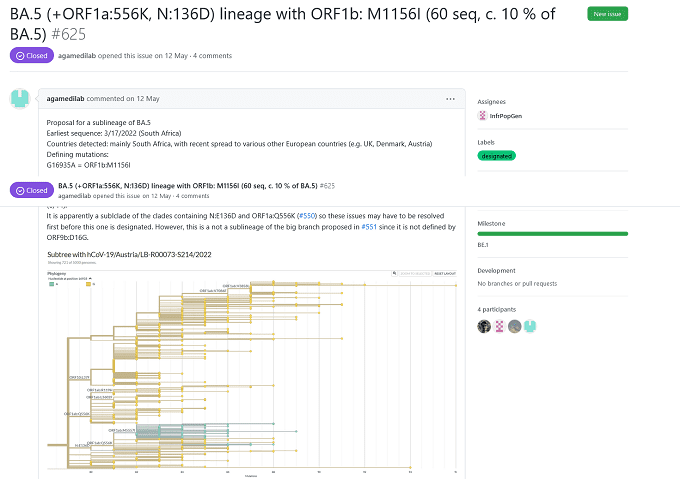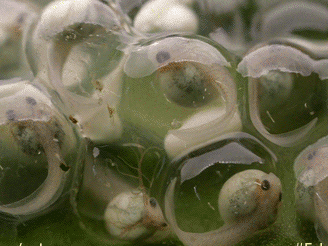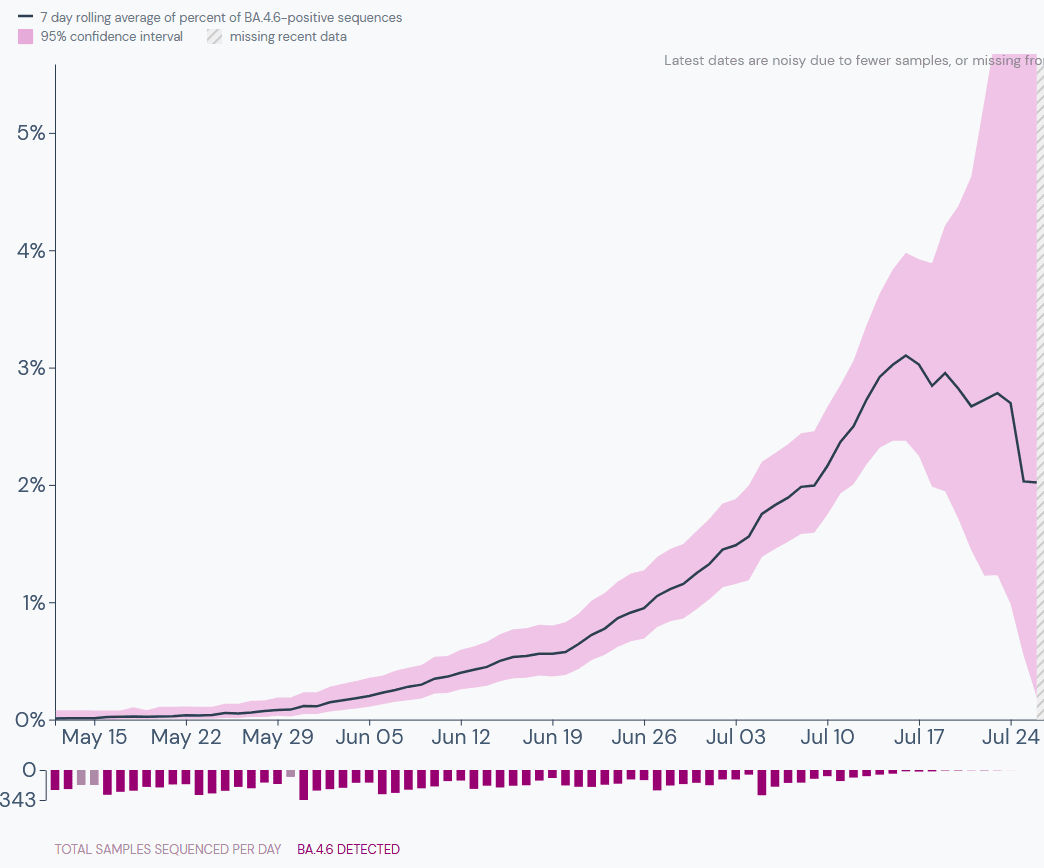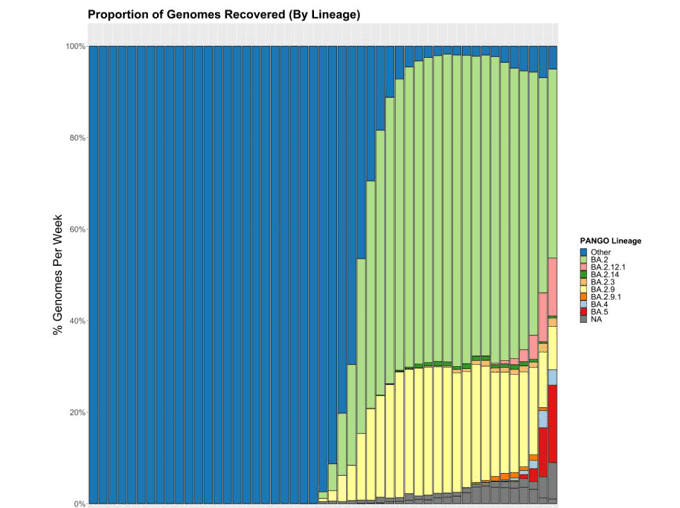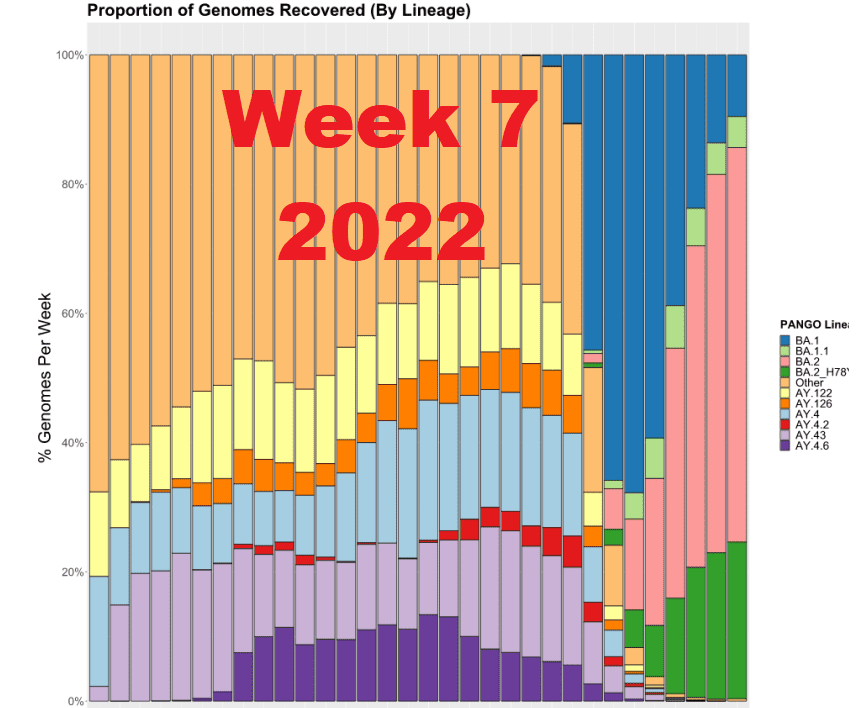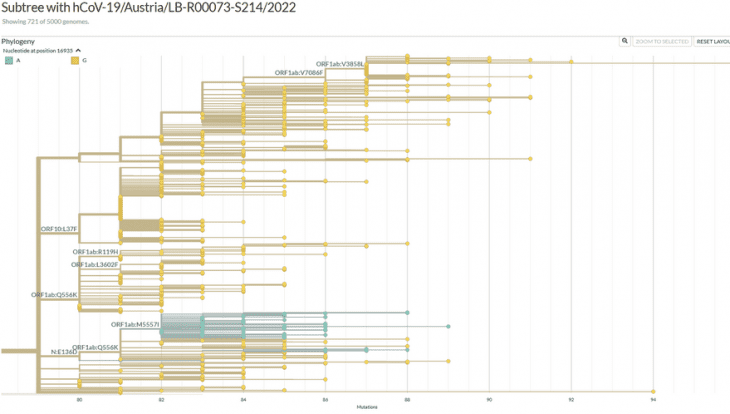
New subvariant of Omicron BA.5 designated BE.1
The new subvariant differs from the conventional BA.5 by three additional mutations (N:E136D, ORF1a:Q556K, ORF1b:M1156I).
Biologist Dr. Alexander Gamisch and the laboratory physician Dr. Elisabeth Mustafa describe a previously unknown subvariant of the omicron subvariant BA.5. The new variant is called BE.1 and differs from the conventional BA.5 by three additional mutations (N:E136D, ORF1a:Q556K, ORF1b:M1156I).
Originally, BE.1 probably arose in South Africa in mid-March and has since been detected in twelve other countries in Europe, Asia and North America. Around 5.5% of the BA.5 genomes worldwide can now be assigned to the new BE.1 variant. In Austria, the first BE.1 cases were already confirmed in samples from early May using genome sequencing.
Approximately 12% of the Austrian BA.5 genomes can currently be assigned to the new BE.1 variant. However, the number of unreported cases could be higher, since the spike protein of BE.1 resembles that of BA.4/BA.5 and can therefore only be differentiated using complete genome sequencing. In Austria, however, the more cost-effective partial genome sequencing dominates at around 75%, in which only just under 10% of the viral genome (corresponds to around the spike gene) is sequenced. The new BE.1 variant could therefore be systematically under-detected like all variants defined by non-spike mutations.
Medilab Press release: New SARS-CoV-2 subvariant discovered by Medilab
BE.1 (BA.5.3.1.1) vs BA.5.3.1 (in South Africa) : Cov-spectrum predicts ~24% growth advantage in South Africa over last three months period.
[~19% globally] pic.twitter.com/0cQvSHpAz5
— Raj Rajnarayanan (@RajlabN) May 31, 2022
